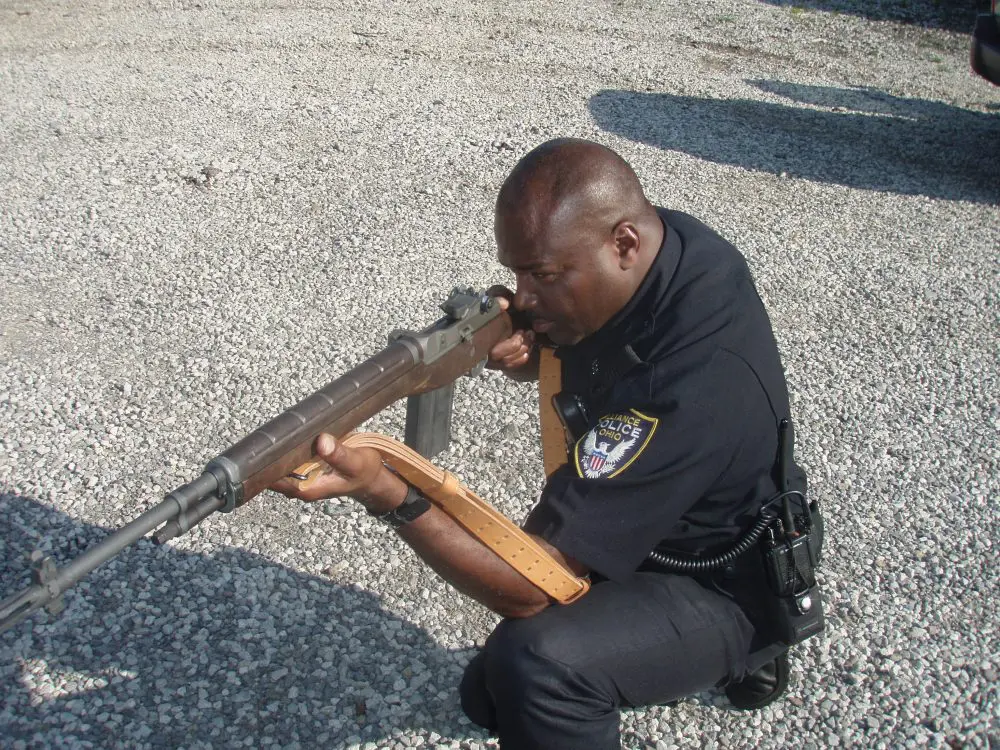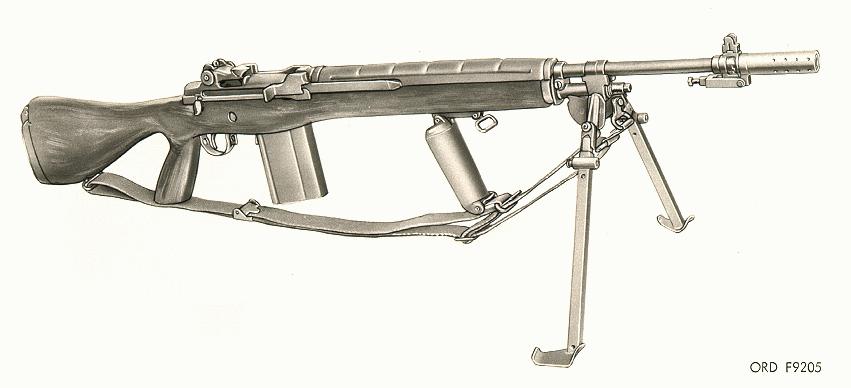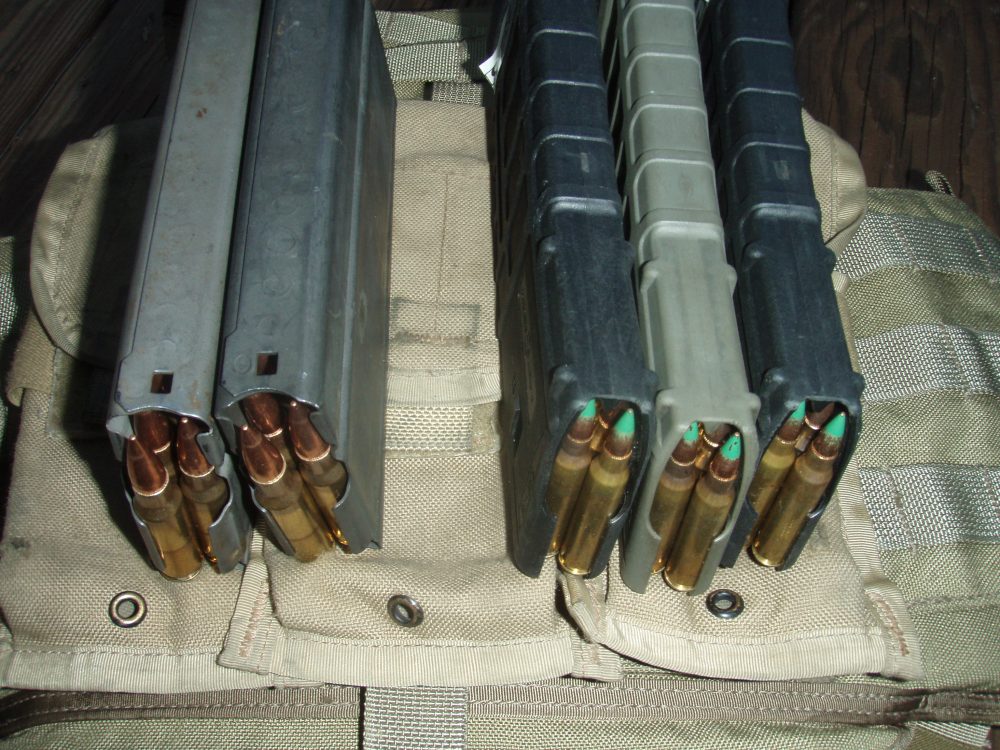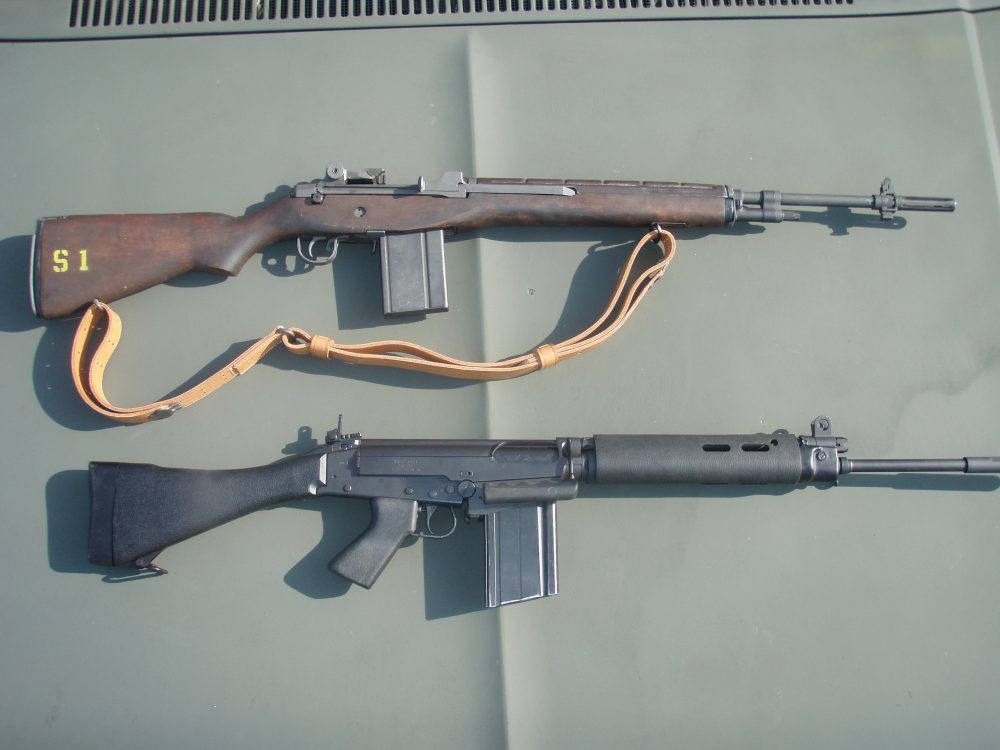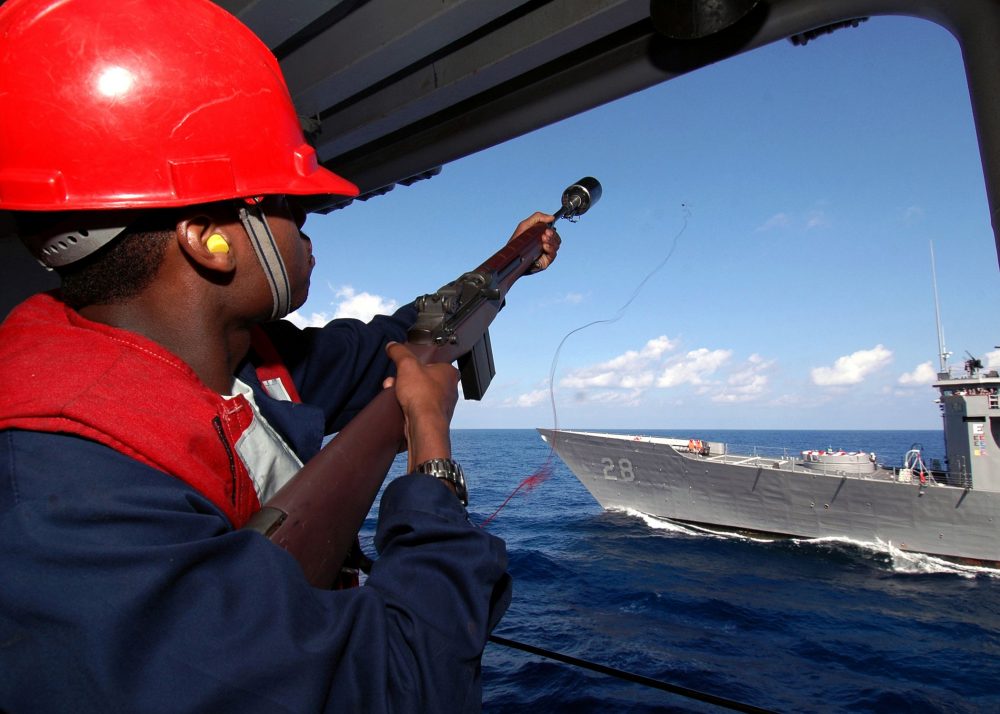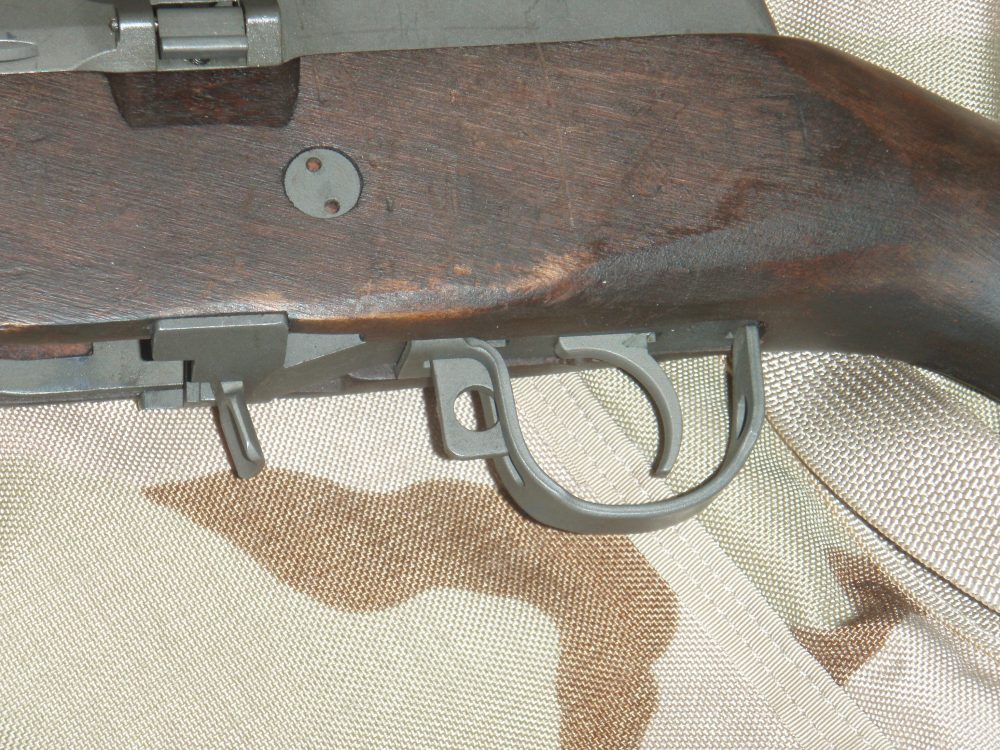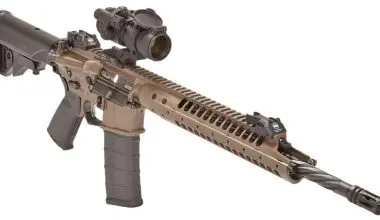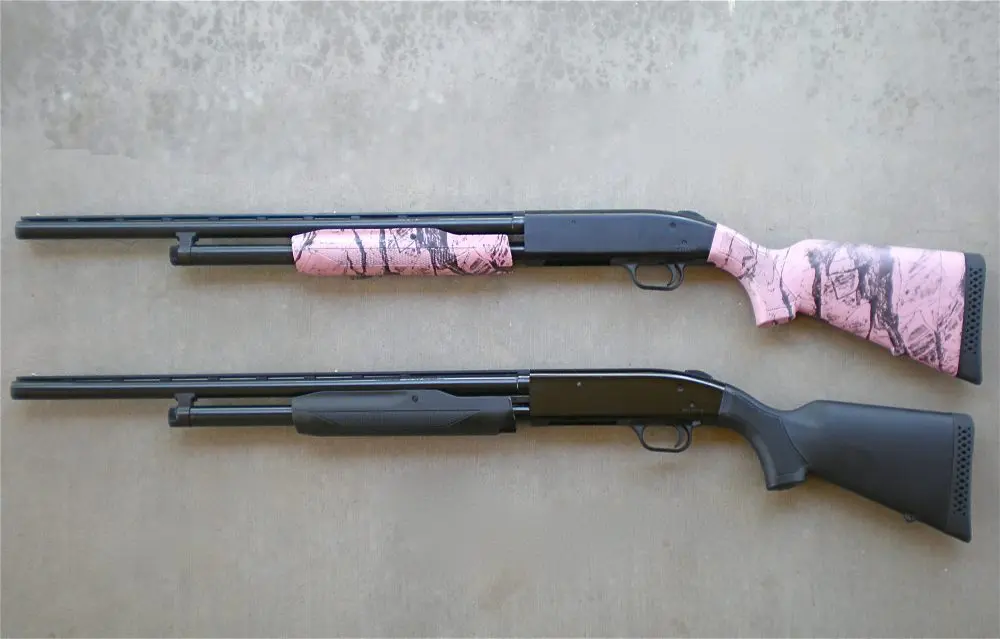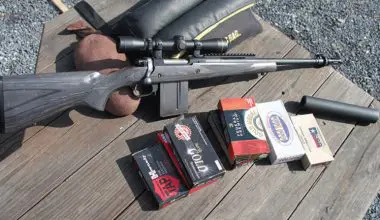For some time, elements of the U.S. military, law enforcement, and the popular gun press have been praising and lifting upon their shoulders a rifle whose shortcomings have apparently been forgotten. I am referring to the U.S. rifle, M14. Volumes have been written about it (R. Blake Stevens’ book is particularly recommended) and I will not try to duplicate them here. I will, however, state a case based on the facts of the M14’s history and its current applications in the War on Terror.
The M14 rifle was developed at about the same time as NATO’s adoption of the 7.62x51mm cartridge, previously known as the .30 Light Rifle. In 1957, the ’14 competed against an FN-FAL variant for selection as the standard U.S. service rifle. The FAL, which was eventually adopted by more than 50 countries, became known as “the free world’s right arm.” The M14, on the other hand, “won” the 1957 competition and became the U.S. service rifle for less than ten years, in other words, the Krag-Jorgenson rifle of the 20th century. The rest of NATO adopted (some after great prodding) 7.62x51mm, but most wanted nothing to do with the M14.
M14 with ACOG in Iraq. Lack of proper cheek weld is due to traditional drop at comb. Another accessory, a separate purpose-built or ad-hoc cheekpiece is needed. Photo: Department of Defense
Production of the M14 by Springfield Armory, H&R, Winchester and TRW only began in 1959, and by 1963 SecDef McNamara had canceled further procurement. Shortly thereafter it was being replaced by the M16.
I will be the first to understand that a rifle made from wood and steel shown engaging targets in Iraq or Afghanistan is very attractive, and there is an obvious appeal to the rifle (in commercial guise) as a hunting, target and general sport rifle. I’ve owned a bunch, and 20 feet from where I sit is a rack full of genuine M14s. But if I were to roll to an active shooter, barricade job or re-deploy to Iraq, I would take what sits in the other rack—an M4 Carbine.
The troops see a need, real and perceived, for a 7.62mm NATO rifle, and I would argue that the resurgence in the use of the M14 in our current conflict is due to one simple fact: there aren’t tens of thousands of other 7.62mm rifles in our inventory. The M14 is there by default.
Intent to recreate functions of Browning Automatic Rifle failed. Photo: Department of Defense
There are reasonably large numbers of deploying troops and LE agencies that are jumping through hoops attempting to field the M14. These rifles in the federal system are at best “limited standard” and, more realistically, obsolete. If the M14 were the hot-ticket weapon, the U.S. would have made more than the 1.3 million total that it did, and more than a handful of foreign countries would have been interested. Most of the countries that did bite could honestly be described as U.S. “client states,” and they rarely bite the hand that feeds them. The major design template for the M14 was the M1 Garand, a marvelous design in 1936, not so much in 2009 (or for that matter, 1957).
Let’s assume that you are going in harm’s way to engage the scumbags that seek to destroy us, and have decided to seek the issuance of the M14 for you or your troops. One of the first hurdles you may face is the Military Table of Organization and Equipment (M-TOE). The M14 doesn’t exist for many units, like the M4/M9/M240B/M249 do. Remember, you are not a member of a special operations unit with a big checkbook and certain carte blanche.
Nearly the same weight penalty: 40 rounds of 7.62mm in steel mags or 90 rounds in Magpul PMAGs, your choice.
Just because something has a National Stock Number (NSN) does not mean you can obtain that something, especially if it is semi-obsolete. If you are able to get the rifle, you will find that said rifle is about 11.5 pounds with a loaded magazine and sling. At the range, you may find that the laser beam accuracy you read about is not quite there. In fact, as the barrel heats, it starts getting considerably worse. The manual (if you actually get one) probably doesn’t mention the 5.6-inch at 100 yards accuracy standard the rifle was produced under, which approaches that of a Kalashnikov design and many other mere “mortal” rifles. Most rifles will shoot a bit better than that, but it was designed as a combat rifle, not a magic death ray.
The idea of a lone rifleman wetting his front sight, wrapping his arm into a sling, taking aim and engaging the clearly visible, charging Hun is just that, an idea. Today’s realities are partially or totally concealed targets and high round counts at close range. If you are truly dedicated to the idea, however, you will persevere.
You will learn that you can bed the action and possibly make a dramatic accuracy improvement. Problem is, you may have to do it several times a year due to use and disassembly/reassembly. If you do get the accuracy you desire, start looking forward to a barrel change two to three times more often than you would in the M4 series. Rack grade vs. rack grade, an M16 design will outshoot an M14 with very few exceptions.
Thompson-Ramo-Wooldridge (TRW) M14 and British variant (L1A1) of its rival, the FN-FAL. More than 50 countries adopted the FAL.
If your intent is to create a Designated Marksman Rifle (DMR), you will need optics. Optics mounting was essentially an afterthought on the M14. You will first find the screw-retained mount that requires you to remove the stripper clip guide (definitely not designed as a mounting point) from the rifle to create another point of contact.
Whether your optic is the excellent ACOG or a conventional telescope, you will need to be constantly vigilant as to your zero, because it is likely to wander considerably through no fault of the optic. In my experience, heavy and frequent use of blue Loctite is called for.
With the optic mounted, you now find that the traditional drop at comb does not allow for a proper cheek weld. Out you go to either buy a purpose-built cheek piece or build your own out of a foam sleeping pad. The importance of easy optics mounting and no loss of zero should never be minimized.
Thousands of M14s and the more practical M16A1 have entered police service via DoD programs.
There are, of course, several manufacturers making truly state-of-the-art chassis systems for the M14. For the cost of two or three car payments, one can be yours, but show up in formation with it and you may get something you didn’t count on. In many conventional units, this may be viewed about the same as showing up wearing a cowboy hat and pink boots. So we are likely back to basics.
The use of 1913 rail systems has revolutionized small arms, and we will likely never see another U.S. service rifle without them. As issued, your 11-pound rifle without 1913 rails cannot accept your PEQ, white light or an M203. If you are really lucky, you will find a cache in the Hindu Kush that contains rifle grenades and launching cartridges.
In learning the bizarre and archaic M14 manual of arms, you become aware that merely placing the weapon on safe or taking it off safe requires your finger to come very near the weapon’s trigger—think of it as an institutionally approved violation of Rule Three. Ergonomics were not a huge consideration in 1936 (the word itself dates only to 1949) or for quite awhile afterward. That’s not just a U.S. thing—take a look at the fire controls on the G3 or AK family. Even the best chassis system won’t help you with what is likely the worst safety placement on a rifle in the last 60 years.
True niche role for M14—ship-to-ship line launching.
Photo: U.S. Navy
As you begin operational use of the rifle, you are now trying to bail out of an M1114 or MRAP, or even worse, clear a house, with a rifle that is over 44 inches long—22 of that being barrel. Your predecessors bitched about that 40-plus years ago in the RVN as well. Your previous M4 had a total length of just under 30 inches with the stock retracted and a barrel length of 14.5 inches.
Your peers with the M4 are carrying nearly twice the ammunition with the same weight penalty. This is in addition to your ruck, NVGs, water, food, armor with SAPI plates and your comms.
But you still have the 7.62mm cartridge! Sure, it will easily outshine the 5.56mm in wind conditions beyond 500 yards, but history and recent experience tell us that that is an extremely long range to get into an engagement at, and that the vast majority are zero to 300 yards. 5.56mm in M855, M856, MK262 and even M193 have been defeating thousands of threats at those ranges for some time. While some speak of the 7.62mm, a very good cartridge, like it is some sort of low-yield nuke, it is still just a bullet.
While we are on the topic, where is your ammunition coming from? Eventually the 240B section will hate you when they figure out who is breaking the belts of M80 ball, and the snipers will probably not want to give up their M118LR or whatever match bullet they like. Do not assume you can get your hands on the newest fin-stabilized “Super Match” projectile you read about. Remember that lawyers, not shooters, determine what ammunition you can use.
Heart of an ergonomics problem: safety placement causes finger to contact trigger during manipulation. Extreme discipline is called for.
In the AOR you may encounter humidity, causing the zero to alter slightly with the wooden stock. You may even discover the problem during disassembly/reassembly when you find wood shavings from insertion of the trigger group. Maintenance is also a chore, as you have to hunt up appropriate tools, including the special tool that is used to grease the bolt roller. You will be cleaning the barrel from the muzzle end, so avoid the segmented issued rods and watch for bore erosion near the muzzle. You should also consider a flash suppressor alignment gauge, because they are known to come out of alignment, causing more accuracy problems.
During use with modern body armor, you will find it impossible to assume a good fighting stance with the issue stock, forcing you to blade your body, which offers up the armpit/”pathway to your soul” to hostile fire.
The M14 was actually designed to replace the M1 Garand, the Browning Automatic Rifle, the M1 Carbine and the M3 Submachinegun. Although it did for a very short while replace the Garand, it was an abysmal failure as a squad support weapon. An 11-pound, 44-inch rifle is the polar opposite of the M1 Carbine, and I need not address it as a sub-gun replacement.
Troops have always lusted after the weapon they did not have. Before we had AKs in quantity here in the States, we were told they never malfunctioned, but we have found that they do indeed malfunction. At times the troops are right, but at times they are just uninformed. For units that can acquire it and provide the very heavy support it requires, from parts procurement to armorers to depot-level fixes, the M14 may serve a niche role for you, but it will likely not be easy. This is not an “average Joe” rifle.
There are other serious tactical considerations as well. In sniper school we were taught to conceal the M24 during unit patrols or for “stay behind” insertions, the point being that the guy (sniper or not) carrying the “different” weapon gets noticed and develops unwanted popularity with the enemy. Now you are carrying a vastly different-looking rifle that also goes “boom” when the other rifles around you do not. The fact that your rifle and magazines are incompatible with most of the rest of the team is also no small issue.
With the development of even better 5.56mm cartridges, not to mention the continuing development of the MK 17/SCAR-H, M110 and various Stoner pattern rifles in 7.62mm, the M14’s days may be truly numbered. I will continue to enjoy using it for various sporting purposes, but the modularity of the M4 series and subsequent rifles will keep those weapons light years ahead of the M14.
Stay safe.
